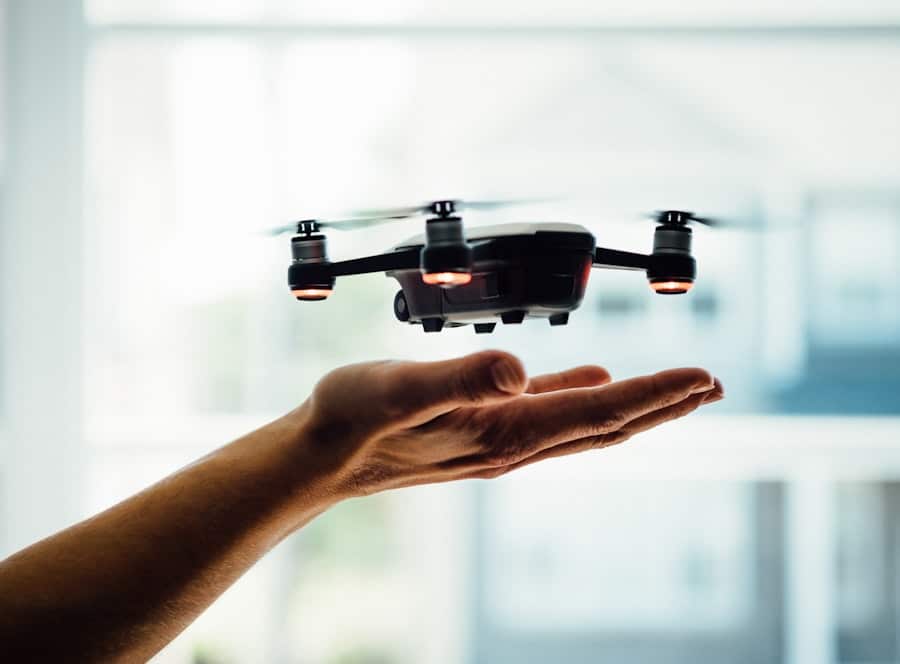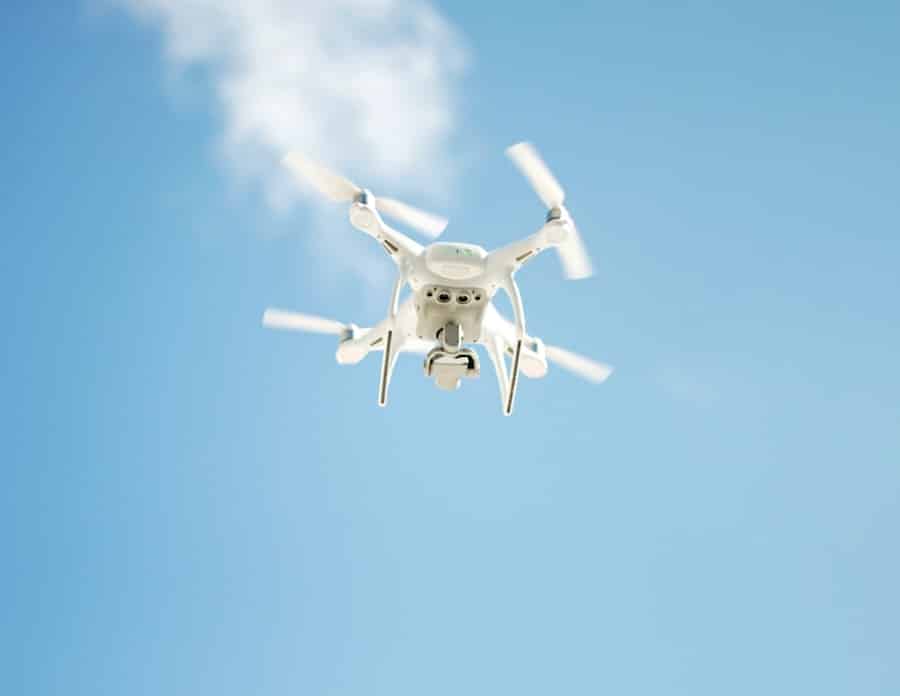The advent of drone technology has revolutionized various sectors, and disaster relief and rescue missions are no exception. Drones, or unmanned aerial vehicles (UAVs), have emerged as critical tools in the arsenal of emergency responders, providing capabilities that were previously unimaginable. Their ability to access hard-to-reach areas, gather real-time data, and deliver supplies has made them indispensable in the wake of natural disasters such as earthquakes, floods, and hurricanes.
As the frequency and intensity of such disasters increase due to climate change, the integration of drones into disaster response strategies is becoming increasingly vital. The use of drones in disaster scenarios not only enhances the efficiency of response efforts but also significantly improves the safety of both responders and victims. Traditional methods of assessing damage and delivering aid often involve significant risks, including exposure to hazardous environments.
Drones mitigate these risks by allowing for aerial surveillance and reconnaissance from a safe distance. Furthermore, the data collected by drones can be analyzed to inform decision-making processes, ensuring that resources are allocated effectively and that aid reaches those who need it most. This article delves into the multifaceted role of drones in disaster relief, exploring their applications, successes, challenges, and future potential.
Key Takeaways
- Drones play a crucial role in disaster relief and rescue missions by providing real-time data, delivering supplies, and conducting search and rescue operations in hard-to-reach areas.
- Successful drone deployments in disaster relief include the use of drones for damage assessment, aerial mapping, and delivering medical supplies in areas affected by natural disasters.
- Challenges and limitations of using drones in disaster relief include regulatory restrictions, limited battery life, and the need for skilled operators to maneuver the drones effectively in high-stress environments.
- Future applications and developments in drone technology for disaster relief include the use of artificial intelligence for autonomous flight, improved battery life, and the development of specialized drones for specific disaster response tasks.
- Ethical and legal considerations in using drones for disaster relief include privacy concerns, data security, and the need for clear guidelines on drone usage in disaster-affected areas.
The Role of Drones in Disaster Response
Drones play a multifaceted role in disaster response, serving various functions that enhance situational awareness and operational efficiency. One of the primary applications of drones is aerial reconnaissance. In the aftermath of a disaster, obtaining a clear picture of the affected area is crucial for effective response planning.
Drones equipped with high-resolution cameras can capture detailed images and videos, allowing emergency responders to assess damage, identify hazards, and locate survivors. This aerial perspective is particularly valuable in scenarios where ground access is limited or dangerous, such as in the aftermath of an earthquake or landslide. In addition to reconnaissance, drones are increasingly being used for delivering essential supplies to remote or inaccessible locations.
During disasters, traditional supply chains can be disrupted, making it challenging to deliver food, water, medical supplies, and other necessities to those in need. Drones can bypass these obstacles by flying directly to affected areas, ensuring that aid reaches victims quickly. For instance, during the 2017 hurricane season in Puerto Rico, drones were utilized to deliver medical supplies to isolated communities cut off from traditional transportation routes.
This capability not only saves time but can also be a matter of life and death in critical situations.
Case Studies of Successful Drone Deployments in Disaster Relief

Several notable case studies illustrate the successful deployment of drones in disaster relief efforts around the world. One prominent example occurred during the 2015 earthquake in Nepal. The magnitude 7.
In response, a team of researchers and humanitarian organizations deployed drones to conduct aerial surveys of the affected areas. The drones captured high-resolution images that were used to create detailed maps of the destruction. This information was invaluable for coordinating relief efforts and prioritizing areas that required immediate assistance.
Another significant case study took place during Hurricane Harvey in 2017 when Texas experienced unprecedented flooding. Drones were employed by various agencies to assess damage and locate stranded individuals. The Texas Department of Public Safety utilized drones equipped with thermal imaging cameras to identify people trapped in their homes or vehicles.
This technology allowed responders to pinpoint locations quickly and dispatch rescue teams effectively. The use of drones not only expedited rescue operations but also provided critical data that informed long-term recovery efforts.
Challenges and Limitations of Using Drones in Disaster Relief
Despite their numerous advantages, the use of drones in disaster relief is not without challenges and limitations. One significant hurdle is regulatory compliance. In many countries, airspace regulations restrict drone operations, particularly in emergency situations where air traffic may be congested or restricted for safety reasons.
Navigating these regulations can delay drone deployment and hinder response efforts. Additionally, obtaining necessary permits and approvals can be time-consuming, which is particularly problematic when rapid action is required. Technical limitations also pose challenges for drone operations in disaster scenarios.
Factors such as battery life, payload capacity, and weather conditions can significantly impact a drone’s effectiveness. For instance, many drones have limited flight times due to battery constraints, which can restrict their operational range and duration during critical missions. Adverse weather conditions such as high winds or heavy rain can also impede drone flights or damage equipment.
Furthermore, while drones can collect vast amounts of data, processing and analyzing this information in real-time remains a complex task that requires skilled personnel and advanced software.
Future Applications and Developments in Drone Technology for Disaster Relief
The future of drone technology holds immense promise for enhancing disaster relief efforts further. Innovations in drone design and capabilities are expected to expand their applications significantly. For instance, advancements in battery technology could lead to longer flight times and increased payload capacities, allowing drones to carry larger quantities of supplies or more sophisticated sensors for data collection.
Additionally, the development of autonomous drones capable of navigating complex environments without human intervention could revolutionize disaster response by enabling rapid assessments and deliveries even in challenging conditions. Moreover, the integration of artificial intelligence (AI) into drone operations is poised to enhance their effectiveness in disaster scenarios. AI algorithms can analyze data collected by drones in real-time, identifying patterns and anomalies that may indicate areas requiring urgent attention.
This capability could streamline decision-making processes for emergency responders, allowing them to allocate resources more efficiently based on real-time insights. Furthermore, collaborative drone networks—where multiple drones work together autonomously—could improve coverage and efficiency during large-scale disasters.
Ethical and Legal Considerations in Using Drones for Disaster Relief

The deployment of drones in disaster relief raises several ethical and legal considerations that must be addressed to ensure responsible use. Privacy concerns are paramount; drones equipped with cameras can inadvertently capture images of individuals without their consent, leading to potential violations of privacy rights. It is essential for organizations deploying drones to establish clear guidelines regarding data collection and usage while ensuring compliance with local privacy laws.
Additionally, there are ethical implications related to the potential militarization of drone technology in humanitarian contexts. The use of drones for surveillance or reconnaissance may raise concerns about their application in conflict zones or areas with ongoing tensions. Humanitarian organizations must navigate these complexities carefully to maintain trust with affected communities while ensuring that their operations do not inadvertently contribute to conflict escalation or exacerbate existing tensions.
Training and Education for Drone Operators in Disaster Relief
As the use of drones becomes more prevalent in disaster relief efforts, the need for trained operators is increasingly critical. Effective drone operation requires a combination of technical skills and situational awareness specific to disaster scenarios.
Organizations involved in disaster relief should prioritize developing comprehensive training curricula that address these needs. This training should include hands-on experience with various drone models, instruction on navigating regulatory frameworks, and education on ethical considerations related to drone use. Furthermore, ongoing education will be essential as technology evolves; operators must stay informed about advancements in drone capabilities and emerging best practices within the field.
The Potential of Drones in Improving Disaster Response and Rescue Missions
The integration of drones into disaster relief efforts represents a transformative shift in how emergency responders approach crisis situations. With their ability to provide real-time data, deliver supplies efficiently, and enhance situational awareness, drones have proven themselves as invaluable assets during disasters. While challenges remain—ranging from regulatory hurdles to ethical considerations—the potential benefits far outweigh these obstacles.
As technology continues to advance, the future applications of drones in disaster relief are likely to expand even further, paving the way for more effective responses to crises around the globe. By investing in training programs for operators and addressing ethical concerns proactively, organizations can harness the full potential of drone technology to save lives and improve outcomes during some of humanity’s most challenging moments.
In the realm of technological advancements, drones have emerged as pivotal tools in disaster relief and rescue missions, as highlighted in the case study on their application in such critical scenarios. These unmanned aerial vehicles offer unparalleled capabilities in accessing hard-to-reach areas, delivering essential supplies, and providing real-time data to aid in decision-making processes. A related article that delves into the broader implications of technology in modern society is this piece on the evolution of digital media platforms. It explores how technological innovations, much like drones in disaster management, have transformed various sectors by enhancing efficiency and accessibility.
FAQs
What are drones?
Drones, also known as unmanned aerial vehicles (UAVs), are aircraft that are operated without a human pilot on board. They can be controlled remotely by a human operator or autonomously by onboard computers.
How are drones used in disaster relief and rescue missions?
Drones are used in disaster relief and rescue missions to assess damage, search for survivors, deliver supplies, and provide real-time situational awareness to first responders. They can access hard-to-reach areas and provide valuable data to aid in decision-making.
What are the benefits of using drones in disaster relief and rescue missions?
Using drones in disaster relief and rescue missions can help to improve response times, reduce risks to first responders, and provide valuable information to aid in decision-making. Drones can also cover large areas quickly and efficiently, and can be deployed rapidly in emergency situations.
What are some examples of drones being used in disaster relief and rescue missions?
Drones have been used in various disaster relief and rescue missions around the world, including after natural disasters such as earthquakes, hurricanes, and floods. They have been used to assess damage, search for survivors, deliver medical supplies, and provide communication capabilities in areas with disrupted infrastructure.
What are the challenges of using drones in disaster relief and rescue missions?
Challenges of using drones in disaster relief and rescue missions include regulatory restrictions, limited battery life and flight range, adverse weather conditions, and the need for skilled operators. Additionally, privacy and ethical considerations must be taken into account when using drones in emergency situations.

